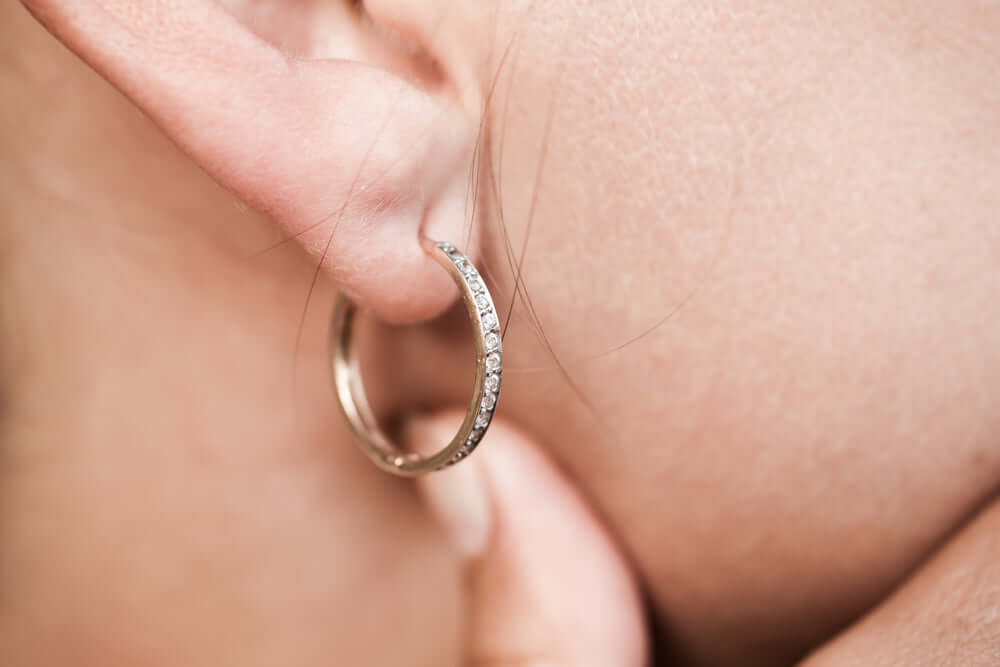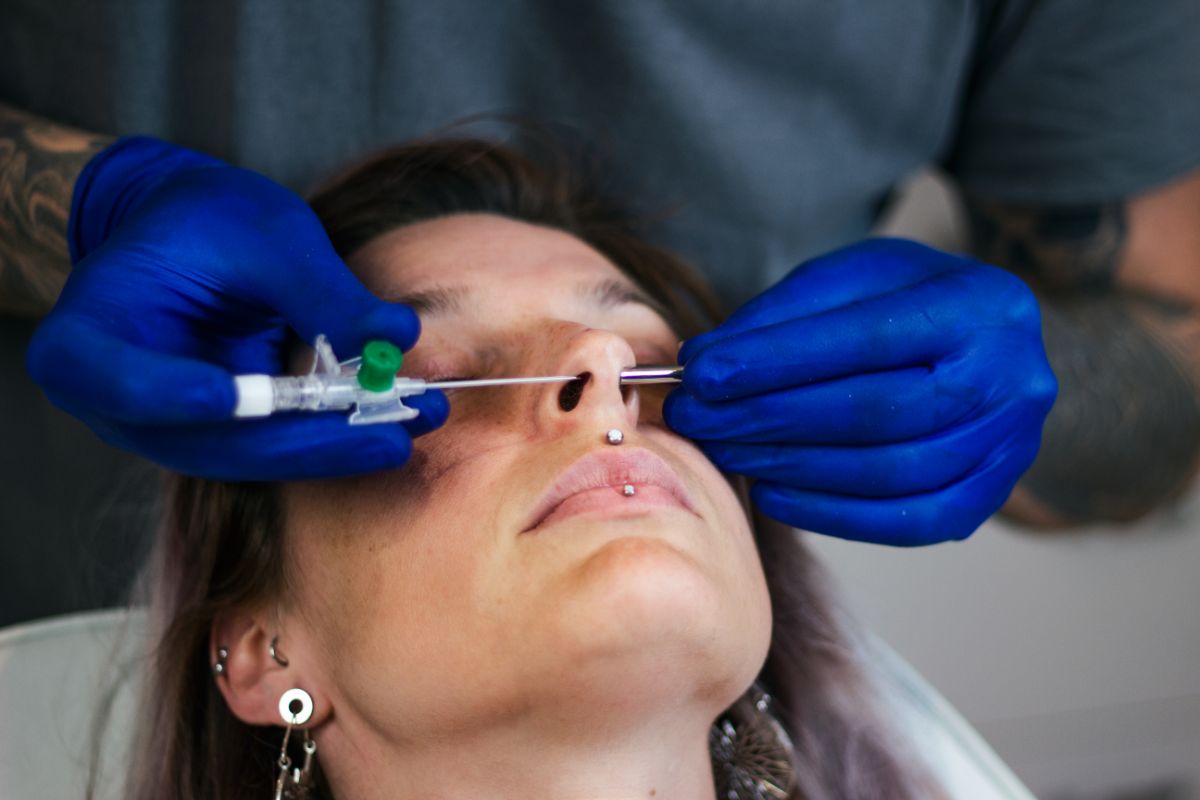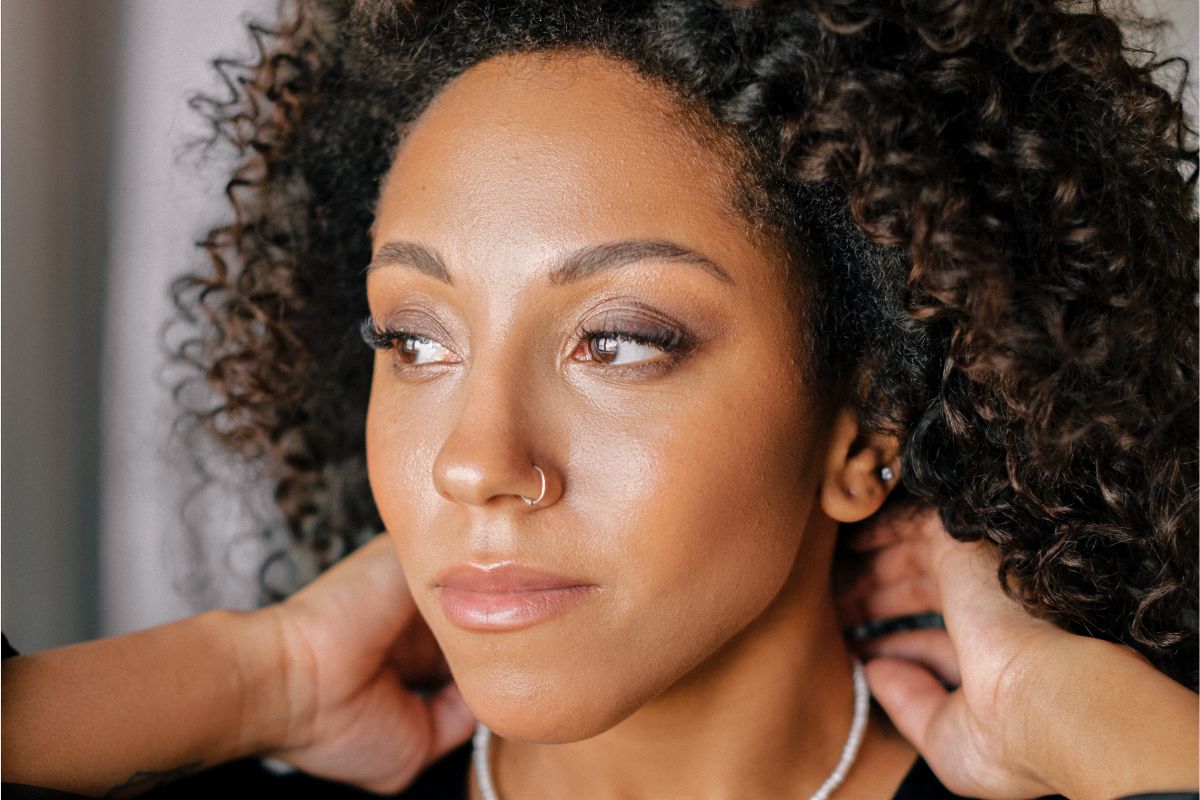An earring hole that has started to smell after healing is fairly common in the piercing world. There are several reasons for this. The most common reason for smelly earring holes is due to a build-up of dead cells. This will smell differently depending on each person - some will have a waxy scent, and others will have the distinctive behind-the-ear smell constantly. Some earring holes will smell putrid.
Dead cells mix with sebum to create an awful smell. Sebum is an oily substance created by the sebaceous glands which make the skin waterproof. When an earring hole hasn’t been cleaned properly, the sebum will mix with the dead cells caused by the pierced skin to create a gross smell.

There are several ways to avoid and cure smelly earring holes. You should clean your earring hole and jewelry regularly to get rid of the bacteria from the sebum and dead cells. You can do this by simply washing your earrings and earring hole with warm water and soap. If the smell doesn’t go away, you can use an antibacterial cleanser instead.
However, don’t overclean your jewelry and earring holes! Sebum is good for the skin, after all. Your earring hole is technically an open wound, so exposing it to harsh chemicals will cause irritation and potential infection. Also, make sure to let your earring holes breathe by not wearing them all the time - particularly when you sleep as bacteria is more likely to build up when your ear is pressed to other parts of your skin and bedding.
Why are my earring holes black?
A black piercing hole is a sign of improper jewelry. People will react differently to different materials - but most will agree that stainless steel piercings are the highest quality to avoid the black areas. Cheaper materials will cause argyria.
Argyria refers to the exposure to improper materials that causes oxidation, shown by a black, grey, or bluish color inside and around an earring hole.
Another cause of a black earring hole is a build-up of dirt mixed with the skin’s natural discharge. Sebum is an oil that the skin creates to provide a waterproof exterior, and the skin around a piercing will naturally shed. These discharges mixed with dirt from lack of cleaning can also oxidize, leaving a black or grey gunk.
This gunk can be pushed out with a clean earring or washed out with warm soap and water. You can enter a clean earring into the hole from the front or back to try and budge the gunk. Make sure you clean the earring properly beforehand and try to avoid cheap earrings that are made of materials that erode and will cause more of the black gunk.
If you notice a gray or black stain around the outside of your earring hole rather than inside it, this can still be a sign of a cheap earring or piercing. Cheap piercings are made of low-grade alloys that can erode inside the piercing hole, causing oxidation. Sterling silver is probably the most reliable earring material to go for, but even these earrings will contain other metals that can turn the earring hole black.
Why are my earring holes crusty?
Crusty earring holes can be a sign of several things. It could be anything from a change of environment to a cold area to improper jewelry. Crusty earring holes can range from dry and flaky skin to itchy and crusty skin.
If you’ve recently had your ears pierced and the crust has developed around the piercing, this is usually normal during the healing process. This is very common in a variety of piercings in the body. It’s a sign of your natural body fluids escaping the newly formed hole, including dead cells and plasma, which then dry when they reach the surface and turn into crust. Make sure to carefully clean and remove this crust.
The main cause of crusty earring holes is allergies. Piercing allergies are very common in most people and it all comes down to the material of the piercing. Cheap and low-grade alloy piercings such as nickel are almost always going to cause some sort of allergic reaction that ends in crust.
Bacteria build-up is another reason for crust. As with healing earring holes, the body’s natural fluids will seep through the hole and piercing to the air, which will then harden to a crust. This can be disinfected and cleaned carefully and easily.
There are several ways to avoid and cure crusty earring holes. This includes cleaning the area with warm water and antibacterial soap, avoiding cheap jewelry and opting for safe metals like stainless steel or titanium, and going to a doctor if the crust persists and if a puss-like substance oozes. Dr. Piercing Aftercare offers high-quality, safe, and reliable cleaning equipment for a range of piercings.
Why do my earring holes hurt?
Painful earring holes can be a sign of many spontaneous reasons. It is fairly common for earring holes to hurt randomly, and luckily, it’s not always a sign of infection.
If you have recently had your ears pierced by a spring-loaded piercing gun, this will often result in a painful earring hole. This is completely normal and inevitable for any piercing, and the pain will eventually go away during the healing process. Piercings done by a needle are generally less painful.
If your earring holes have healed and you have been wearing piercings on and off for years, you’ll be well-accustomed to re-piercing your earring holes with an earring. This will often result in a painful earring hole, and the pain will disappear after a day or two.
Infection is the most concerning reason for an earring hole to hurt. This can be caused by unsterile needles, cheap jewelry that causes an allergic reaction, lack of cleaning, and frequently touching the piercing with unwashed hands. Whilst infections are generally easy to take care of and cure by yourself, you should seek medical advice if the infection causes yellow pus and foul odor.
Sometimes, your earring holes will hurt out of nowhere! In these instances, make sure to clean the area with warm water and soap and to avoid putting in another piercing to let the area breathe.






